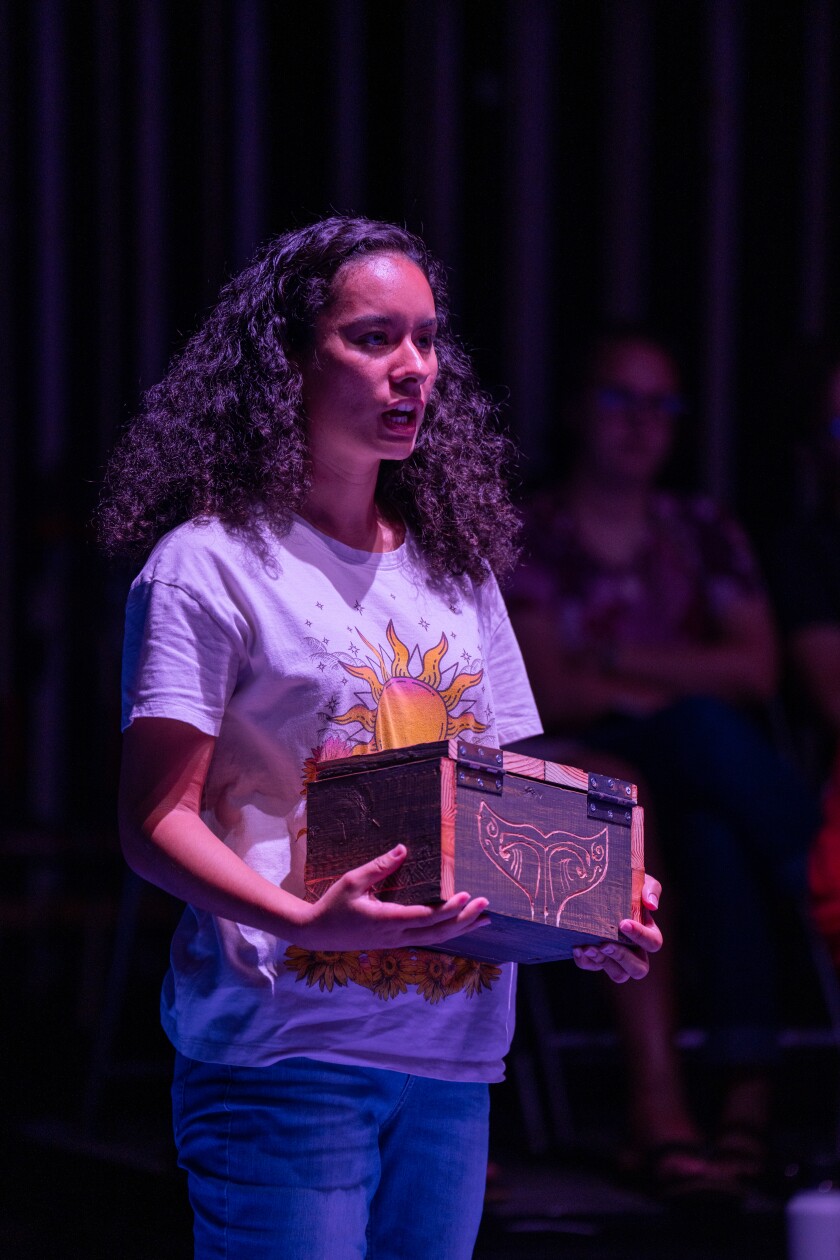Children from around the island came to BYU–Hawaii to learn stories of the past through the interactive play titled “Ola Ko’olauloa,” followed by an interactive children’s discovery exhibit

As BYU–Hawaii’s new play titled “Ola Ko’olauloa” wrapped up its final performances, elementary school students from all over the island visited the campus of BYUH and engaged in the "Nā Mo'olelo o Ko'olauloa" - an interactive keiki exhibit to teach about the stories in the play. Children gathered around the stage in a circle while BYUH students performed a close-up version of the educational play.
Shark attacks, jumping off whales and pig demigods are all things you’d find in the play "Ola Ko’olauloa." This play at BYUH’s McKay Auditorium had the audience waving their hands, laughing and joining in on the adventure. The play allows “the kids [to] become the moral compass for the show. Our target ages are 4 to 9 [years old],” said Kristl Densley, assistant professor in the Faculty of Culture, Language & Performing Arts.

After watching the Ko’olauloa play performed by BYUH THEA 285R class students, the elementary school students were able to engage with a supplemental children’s discovery exhibit created by five students in another section of the THEA 285R class.
BYUH assistant professor and University Archivist Gailyn Bopp shared about how the Ko’olauloa interactive play and exhibit came about. “A section of the THEA 285R class dedicated to lobby exhibits has not been taught before, to my knowledge, and was designed as a supplement to the play 'Ola Ko’olauloa' written by Kristl Densley,” explained Bopp.
“We chose to do an exhibit not only to support the play but to support the curriculum in the schools around us as well,” Bopp said. “We are so grateful for collaborative conversations and resource sharing with Kamehameha Preschool – Kahuku that inspired this work.”
Hannah Johnson, a senior from Idaho majoring in intercultural peacebuilding, was one of the students who helped in creating the exhibit project. She expressed some of her feelings while working on the Ko’olauloa exhibit. “I didn’t even know any of these stories before we started doing it and now I know all of them,” said Johnson.

Densley said she developed and created the play to teach little children. She shared, “I was playing with this idea that we don’t care for the place we are in or for each other until we know why to care.”
Bopp said, “All of the stories in the play are place specific mo'olelo (traditional stories) from this area of Ko'olauloa.” Ko’olauloa refers to the northeastern district of Oahu that covers Waimea Bay to Ka’a’awa.
Johnson explained every station of the exhibit has a sign relating to the Ko’olauloa play, which made it great for the elementary students to enjoy. “I think it’s just great to see the kids interact because I see them asking questions like, ‘Oh I remember seeing that in the play!’ or being like, ‘Oh I remember reading about this,’” said Johnson.
The play follows a girl named Lā'iekawai who doesn’t want to do her chores or have a relationship with her sister, Lā'ielohelohe, but then discovers a box with relics from the past. Mythology from the past comes to life in front of Lā'iekawai and she experiences the myths first hand. “I wanted [the children] to see the stories they are learning about in 3D. We did a lot of research because everybody tells these stories in their own way,” Densley shared.

Throughout the play, Lā'iekawai and other characters called out to the audience for help or to warn someone of danger. Densley explained how, “as she travels, she tries to warn people but nobody can hear her, but by the last story, [Kamapua'a] asks for her help and she is surprised he can see her. … By the end, she wants to know more.” She said the play discusses what people can learn from the stories of the past.
Mrs. Salanoa, a first grade teacher at Laie Elementary who attended the play and exhibit with her students, said, “I really loved the play and how the performers were interacting with the students. I know the students loved it! I think it’s important for them to understand the history because then the students can make connections of where they’re from and have a better sense of belonging.” To everyone who made this possible, Salanoa would like to say, “Thank you. Great job and job well done.”

In addition to the performers and students in the exhibit class, there were many people that played a part in making the play and discovery exhibit a hit. The technical crew was led by Stephen Crowell, Technical Theater Manager for BYUH under Event Services and Outreach and the costume team was led by Aurie Sorensen, Theater Costume and Production Manager/Administrative Assistant for BYUH under the Center for Learning & Teaching, Distance Learning.
Bopp said, “Both of these teams were vital in aiding with the creation and installation of exhibit pieces, including keiki-sized costumes for a dress-up station and the taro patch built for the 9-foot-tall statue of Kamapua'a, hand-crafted by Laie community members Jared Pere and Azure Crowell.

“Retired BYU–Hawaii professor and renowned artist Mata’umu Alisa crafted the exhibit’s ‘stone soldiers’ and treated our students to a lesson in grid painting, resulting in the 24-foot mural of the giant mo'o, Laniloa,” Bopp added.
